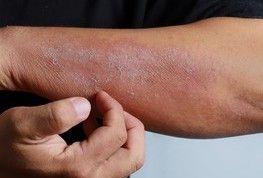News
Article
Pro-Inflammatory Diet Could Increase Chronic Liver Disease Risk
Author(s):
Key Takeaways
- Pro-inflammatory diets, indicated by higher DII scores, are linked to increased CLD risk and cirrhosis progression.
- Anti-inflammatory diets may offer preventive and management benefits for CLD, highlighting dietary modification's potential role.
Higher Dietary Inflammatory Index scores were associated with an increased risk of developing chronic liver disease and cirrhosis progression.
Credit: Adobe Stock

New research is shedding light on a significant association between pro-inflammatory dietary patterns and chronic liver disease (CLD) risk, suggesting individuals with greater Dietary Inflammatory Index (DII) scores are more likely to develop CLD.1
Study findings highlight the potential benefits of adopting anti-inflammatory diets as a strategy for the prevention and management of CLD. Beyond being a risk factor for CLD, greater DII scores were also associated with progression to cirrhosis, but not liver cancer, in individuals with CLD.1
According to the US Centers for Disease Control and Prevention, 4.5 million US adults ≥ 18 years of age have diagnosed liver disease, which is the 10th leading cause of death in the US.2 Given the liver’s pivotal role in metabolic processes, understanding the relationship between nutrition and CLD is significant.
“Given that inflammation is a shared pathological feature in CLD, the DII score may influence a broader range of liver conditions,” Shenglong Lin, MD, of the department of severe hepatopathy at Mengchao Hepatobiliary Hospital of Fujian Medical University, and colleagues wrote.1 “However, the link between DII and the full spectrum of CLD remains unclear, highlighting the need for more comprehensive research to address this gap.”
To explore the association between DII and CLD risk, investigators examined data from the UK Biobank cohort for participants who completed ≥ 1 online 24-hour dietary recall questionnaire through the Oxford WebQ, which captures information on the consumption of over 200 common food items and beverages. Participants who were missing vital nutrient component data, characteristic data, or personal lifestyle data; those with a history of CLD or malignant tumors, defined by self-reported medical conditions, and those diagnosed with CLD or a malignant tumor prior to the baseline; and participants who experienced relevant events within the first year of the study were excluded.1
Investigators calculated participants’ DII, a scoring system developed to assess the inflammatory potential of an individual's diet, using 29 dietary parameters available from the UK Biobank dataset. Each component was weighted based on its known pro-inflammatory or anti-inflammatory effects, with reference to a global mean and standard deviation obtained from the literature.1
The primary outcome was the incidence of CLD, including conditions such as fatty liver disease, hepatitis, cirrhosis, liver fibrosis, and hepatocellular carcinoma. CLD cases were identified through linked hospital records and cancer registries using ICD-10 codes.1
In total, the analysis included 121,329 participants with a median follow-up of 604.43 weeks, during which 4018 developed CLD, including 1168 (29.07%) with nonalcoholic fatty liver disease.1
Upon analysis, a higher DII, indicating a more inflammatory diet, was associated with a 16% increased risk of CLD (hazard ratio [HR], 1.162; 95% CI, 1.065–1.268; P = .001), with each unit increase in DII elevating the risk by 3.3% (HR, 1.033; 95% CI, 1.017–1.050; P <.001).1
Investigators observed a significant positive linear association between DII and CLD risk (P for trend < 0.001). Conversely, no statistically significant non-linear relationship was detected (P = 0.148), suggesting the association between DII and CLD was predominantly linear.1
They then applied competing risk analyses, considering cirrhosis, liver cancer, and death as competing events. After adjustment for covariates, results showed participants in the highest DII quartile exhibited a 14.5% increased risk of CLD compared with those in the lowest quartile (sHR, 1.145; 95% CI, 1.049–1.249; P = .002).1
Investigators conducted a separate analysis on the 4018 patients who developed CLD and found the DII score, assessed both as quartiles and a continuous variable, significantly correlated with the risk of cirrhosis development (HR, 1.583; 95% CI, 1.139–2.199; P = .006 and HR, 1.110; 95% CI, 1.045–1.178; P <.001, respectively).1
Further analysis revealed individuals in the highest quartile of the Healthy Eating Index 2020 had a significantly reduced risk of CLD compared with those in the lowest quartile (HR, 0.923; 95% CI, 0.860–0.992; P = .016), as did those with higher adherence to the Mediterranean diet, as measured by the Mediterranean diet score (HR, 0.961; 95% CI, 0.992–0.998; P <.001).1
“Our study utilizing data from a large prospective cohort demonstrated that participants following a pro-inflammatory dietary pattern had a significantly higher risk of CLD and an elevated risk of cirrhosis progression among those with CLD,” investigators concluded.1 “These findings suggest the potential benefits of adhering to an anti-inflammatory diet, which may play a crucial role in both the prevention and management of CLD.”
References
- Pan L, Xu Z, Li Y, et al. Exploring the association between pro-inflammatory diets and chronic liver diseases: evidence from the UK Biobank. Front Nutr. doi:10.3389/fnut.2025.1537855
- US Centers for Disease Control and Prevention. Chronic Liver Disease and Cirrhosis. November 6, 2023. Accessed February 12, 2025. https://www.cdc.gov/nchs/fastats/liver-disease.htm




